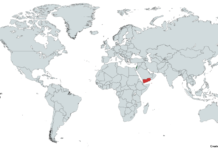On April 28th, 2021, the United States announced that they would be sending $100 million in supplies and support to India, whose coronavirus cases skyrocketed in March and April. As of April 30th, 2021, India has amassed over 400,000 new, confirmed cases of coronavirus. This brings India’s total confirmed cases of coronavirus to just under 17 million cases. The United States’ plan to send $100 million in aid includes 960,000 rapid tests, which reportedly arrived in Delhi on April 29th along with over 100,000 N96 masks for healthcare workers fighting coronavirus on the front lines. In a statement made by the White House, they said, “An initial delivery of 1,100 cylinders will remain in India and can be repeatedly refilled at local supply centers, with more planeloads to come. The U.S. Centers for Disease Control and Prevention has also locally procured oxygen cylinders and will deliver them to support hospital systems in coordination with the Government of India”. The White went on to say, “Oxygen Concentrators: 1700 oxygen concentrators to obtain oxygen from ambient air, these mobile units provide options for flexible patient treatment”.
This comes with criticism that although the United States has had a successful vaccination rate, the resources to create the vaccines were not being made readily available to other countries. President Biden has countered this by explaining that sending unused vaccines abroad is something the United States is not confident enough to do, but that they are working on making sure they are safe to be sent and will retain efficacy. The United States has promised to return India’s kindness from when they sent to aid in the early days of the pandemic, along with Britain, France, and Germany, who all pledged to aid India in their fight. Perhaps the most valuable type of aid being sent are the raw materials to create coronavirus vaccines, as India has a long, professional history producing vaccines. India produces 60% of the world’s vaccines and this aid will kick start the process of beginning to get India’s population vaccinated.
India’s main priority right now is treating patients who have been affected badly by the coronavirus, with the long-term control coming from large amounts of people being vaccinated. India had been praised in the past for its “herd immunity” as coronavirus cases began to dwindle in late 2020, but now are at risk of more waves and variants of coronavirus developing.









